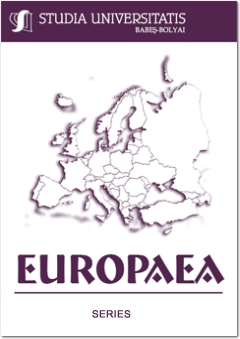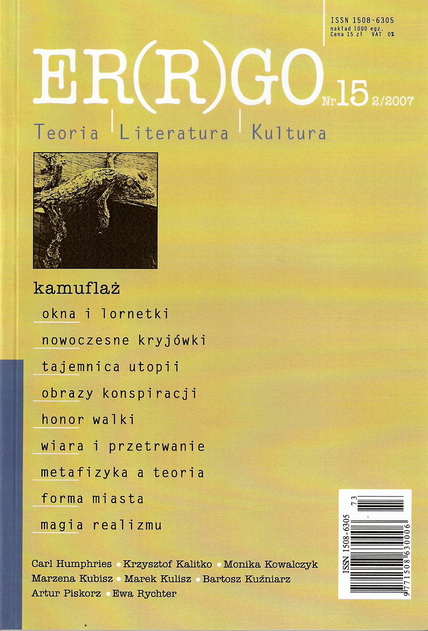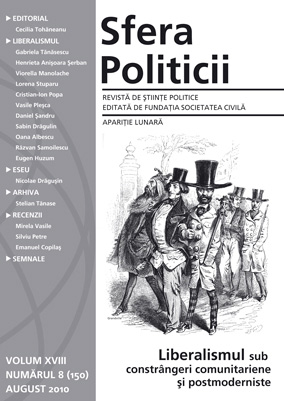
We kindly inform you that, as long as the subject affiliation of our 300.000+ articles is in progress, you might get unsufficient or no results on your third level or second level search. In this case, please broaden your search criteria.








Hollywood cinema has always been keen on producing films dealing with various forms of conspiracy. A particularly prolific era begun towards the late 1960s and continued for nearly a decade. Leftist filmmakers (e.g. Alan J.Pakula, Sidney Pollack) made a number of ‘conspiracy films’ constituting an artistic response to the social and political upheavals of the times (the Pentagon Papers, the Watergate scandal, the Vietnam War, the ITT and Lockheed disclosures, and so on). This cycle of films was to stay with the American filmmakers ever since. Virtually every major political controversy earned itself a conspiracy theory and its filmic representation. Depending on the current ‘fashion’, the films have tackled diverse subjects ranging from the fear of total control to the fear of the world government to the problem of global terrorism after the 9/11 attacks. With the advance of cheap digital technology as well as the Internet, various individuals have been utilizing their opportunity to make films ‘unmasking’ global conspiracies and plots. This has become particularly widespread after the events of September 11. The essay inquires into the possibility of establishing any patterns of discourse between the classic productions and the new, emerging ones.
More...

The essay examines literary (contemporary British fiction) and visual (Western art and film) representations of windows as a space of exposition and transgression in respect to the liminal character of their presence in the cultural (architectural, social and psychological) landscape. Seen from the perspective of Goffman’s sociology of impression management a “window spectacle,” i.e looking out of the window and being exposed to the gaze of the other, entails questions concerning control and self-control, social transparency and secrecy and can be approached in terms of the role it plays in the process of “presentation of self in everyday life” and inhabiting of the private and public spaces.
More...
The essay takes a closer look at one of the “antinomies of postmodernity”, distinguished by Fredric Jameson in his 1994 book The Seeds of Time. Times after the fall of communism have witnessed a tremendous revival of antiutopian thinking, ranging from the Eastern European lustration frenzy up to the western revisions of the French Revolution period. Jameson shows that the strongest arguments against utopia are in fact utopian arguments themselves. For example, the neoliberal, free market ideology – which denounces all forms of social planning, calling for a pure form of the market – despite its scientific outlook, backed by the authority of economics, hinges in reality on the utopian nostalgia for a perfect social order. The widespread anti-utopian mentality is dependent upon secretly provided utopian gratifications. Antiutopian fears of the consequences of social projects are camouflage for a different kind of utopia at work in the contemporary world society. The essay shows this specific (anti-)utopian entanglement of modern man through the example of Paul Weir’s “Truman Show”. Truman escapes the artificial, sterile, simulated conditions of Sea Haven in order to become part of the reality which the western audience perceives as decent, normal, free and livable. On the other hand, this “emancipating” gesture conceals the fact that the scenario from which Truman escapes is in “real life” the very epitome of the global, postmodern, capitalist order.
More...

The idea of camouflage stands in opposition to chivalry, and in particular in opposition to honour and courage. For ages knights and warriors wanted to be seen and recognized, as they could not win fame and glory by hiding and outsmarting their enemy. Surprise attacks carried out from hiding were the domain of highwaymen and other kinds of dishonourable riffraff. The appearance of camouflage, though gradual, marks a change in our civilization’s perception of warfare, and perhaps conflict in general, when it became more important to be cunning and efficient rather than honourable and brave.
More...



The article is a reflection on the ways in which Gianni Vattimo and Jonathan Sheehan on the one hand, and Hugh Pyper and Herbert Schneidau on the other hand, perceive the relationship between the Bible and Western culture. I demonstrate that for all of those thinkers the biblical text tunes in to the contemporay cultural context remarkably well. I also argue, however, that unlike Vattimo, Pyper and Schneidau – two contemporary biblical scholars – maintain that the weak status of the Bible should not be taken for granted. Pyper and Schneidau suggest that since the Scripture’s weakness may be a survival strategy (a camouflage), one should leave open the possibility that the Bible’s cultural stance could undergo a surprising transformation in the future.
More...

